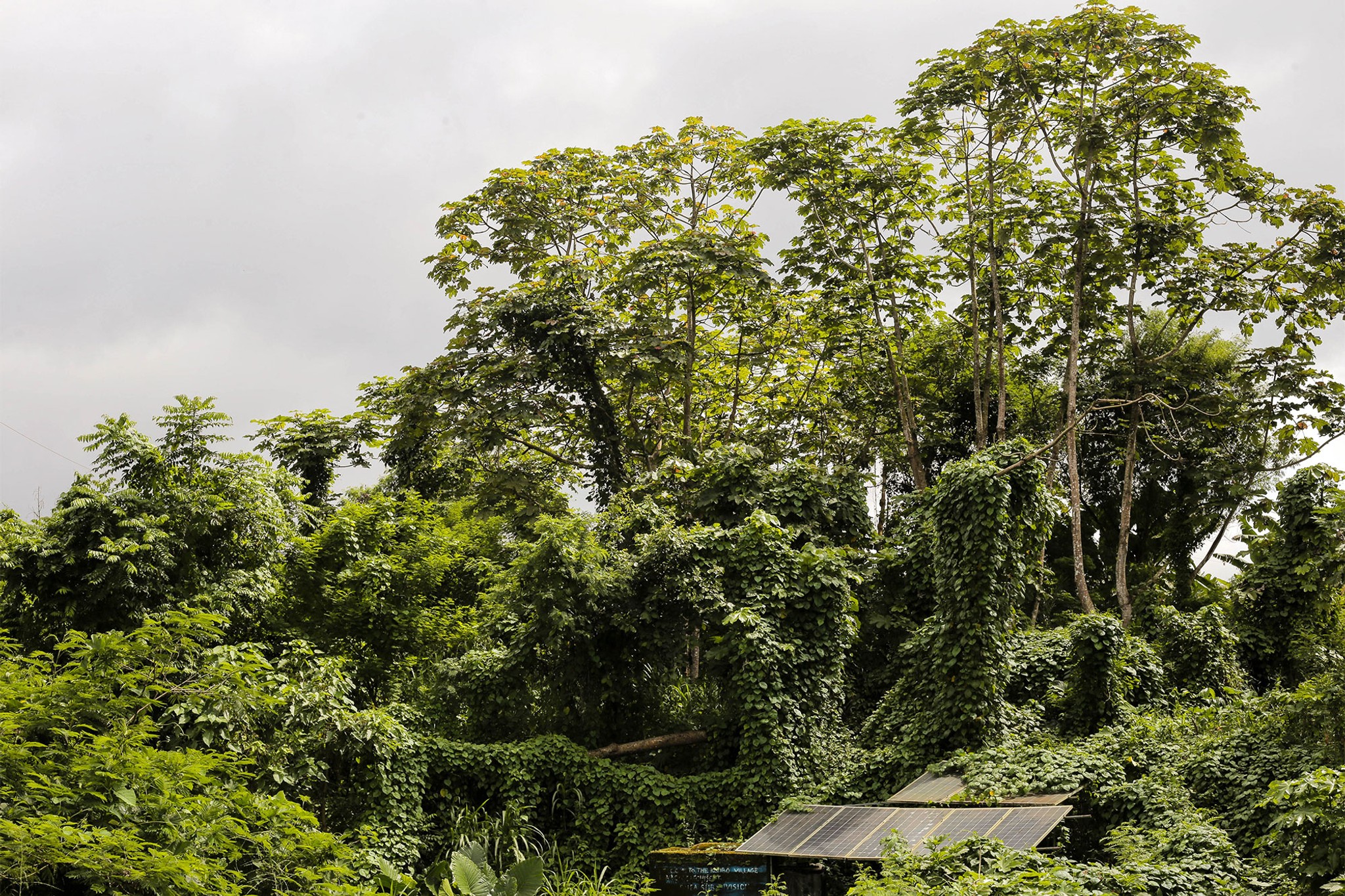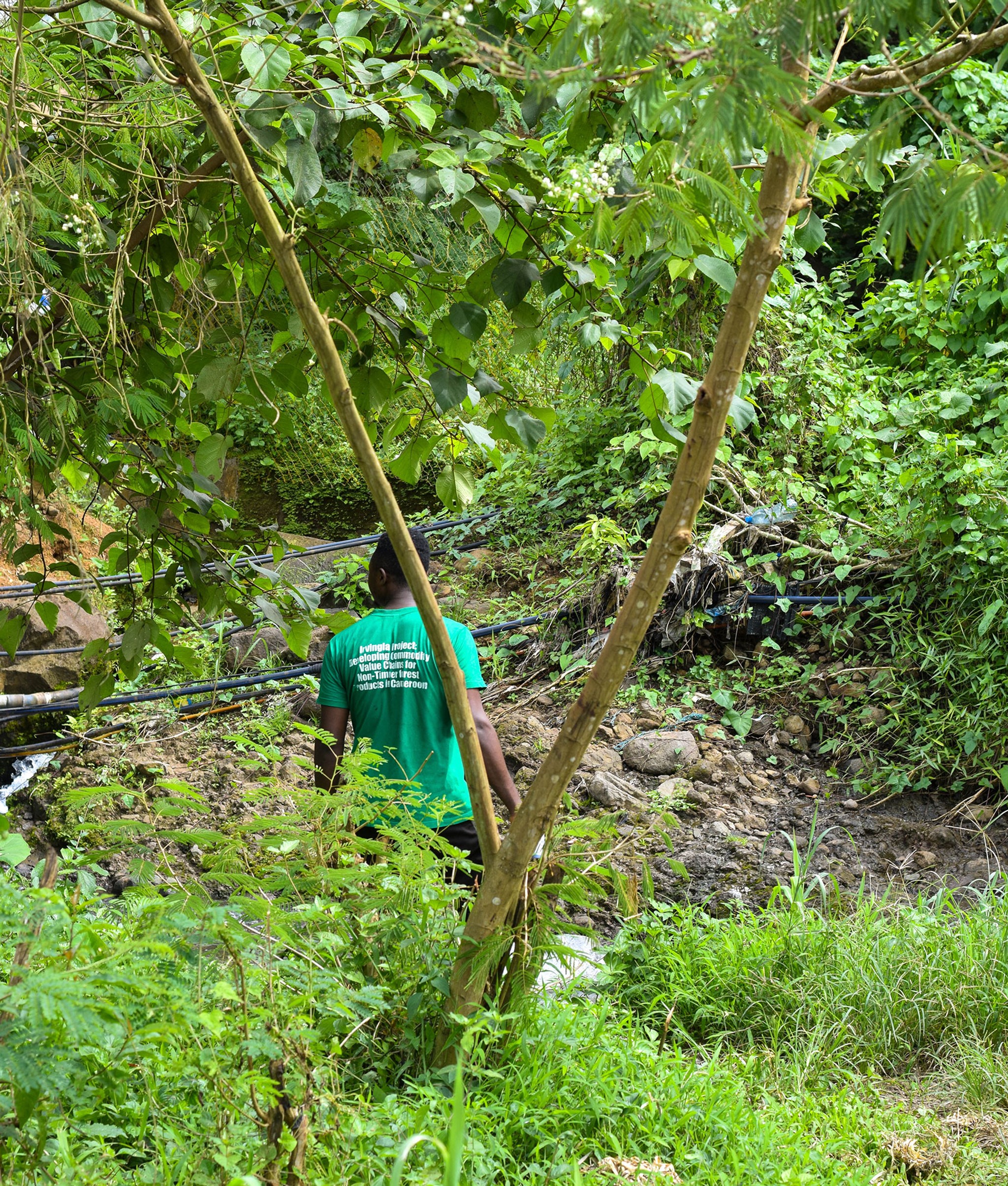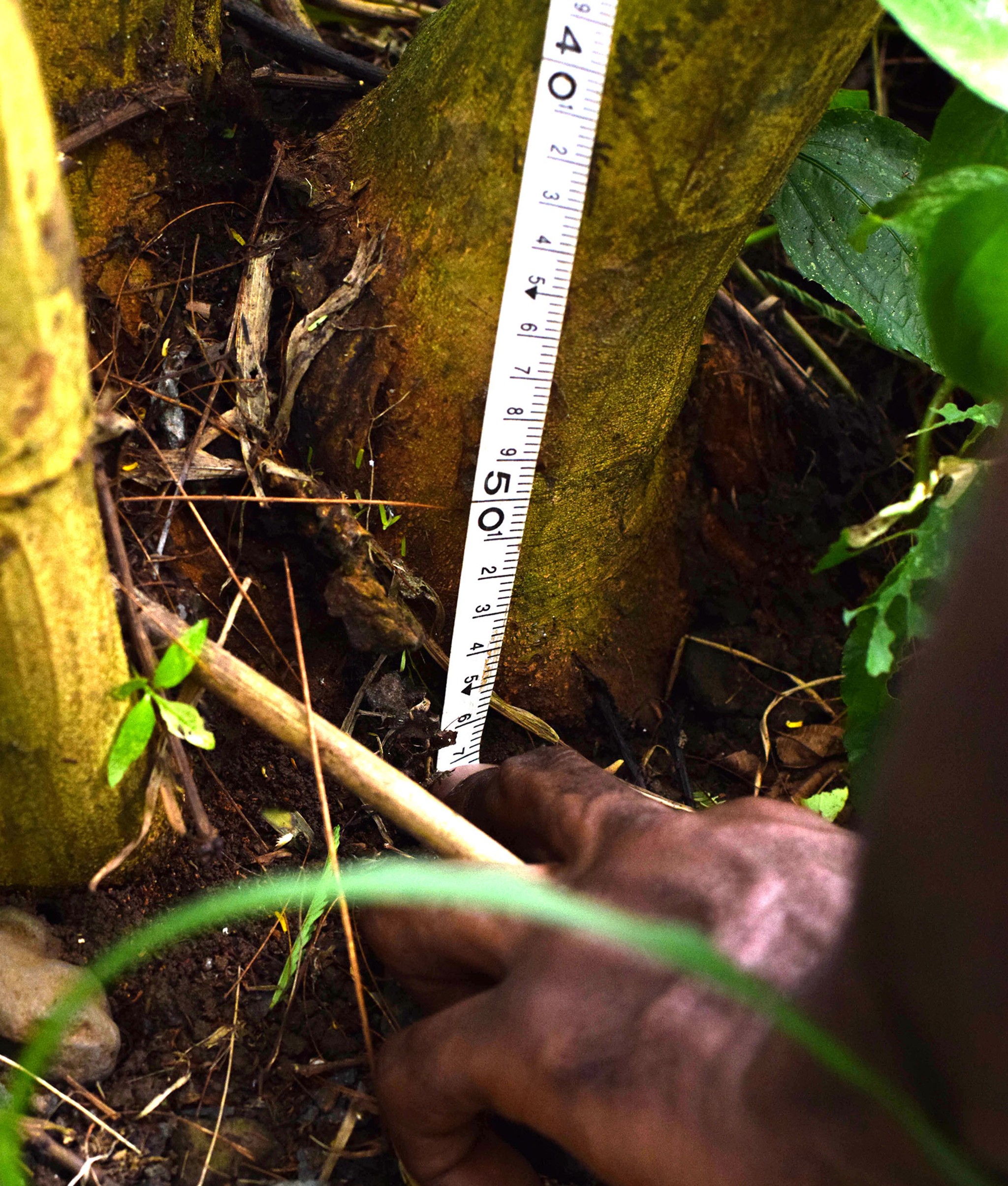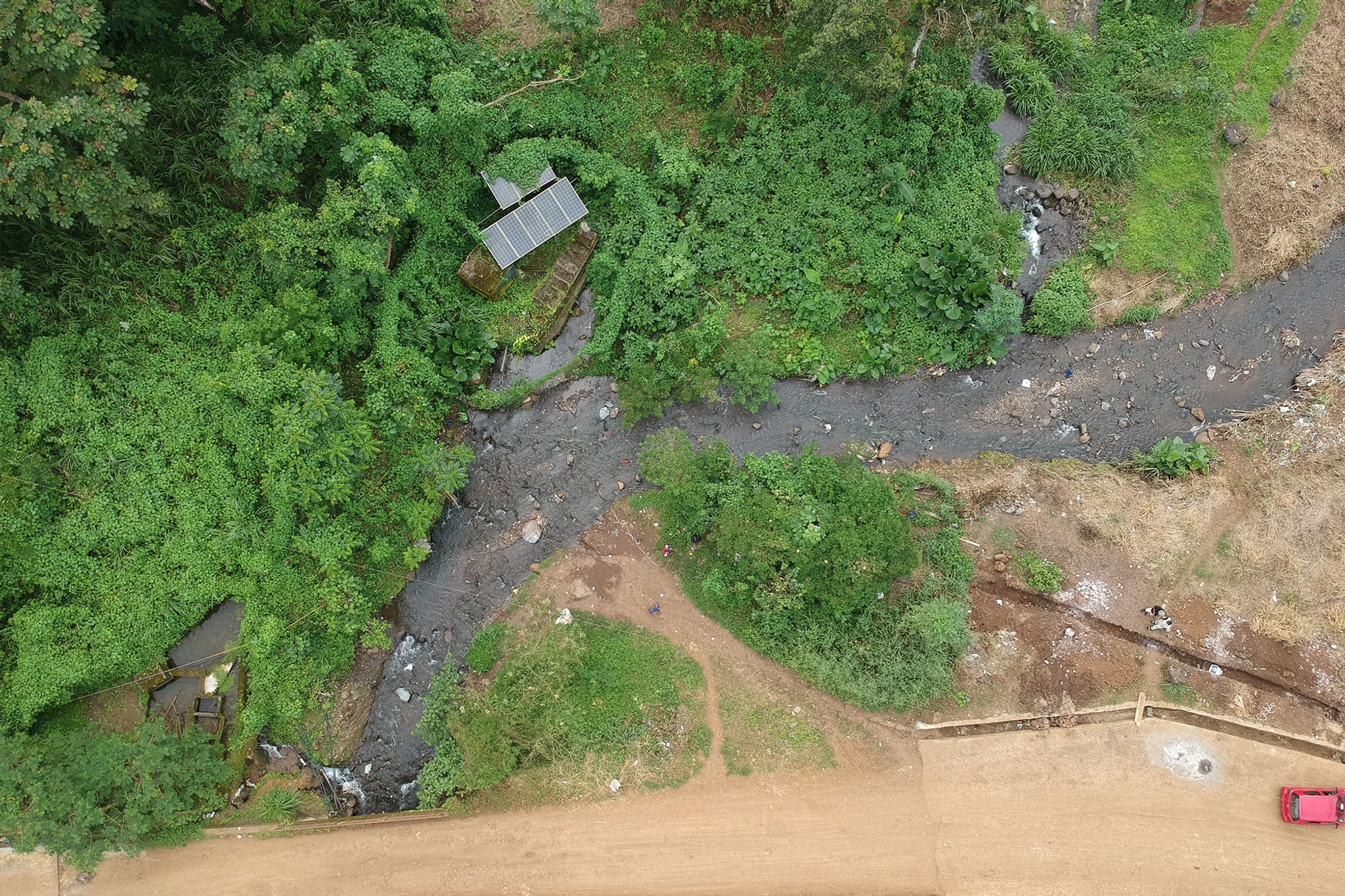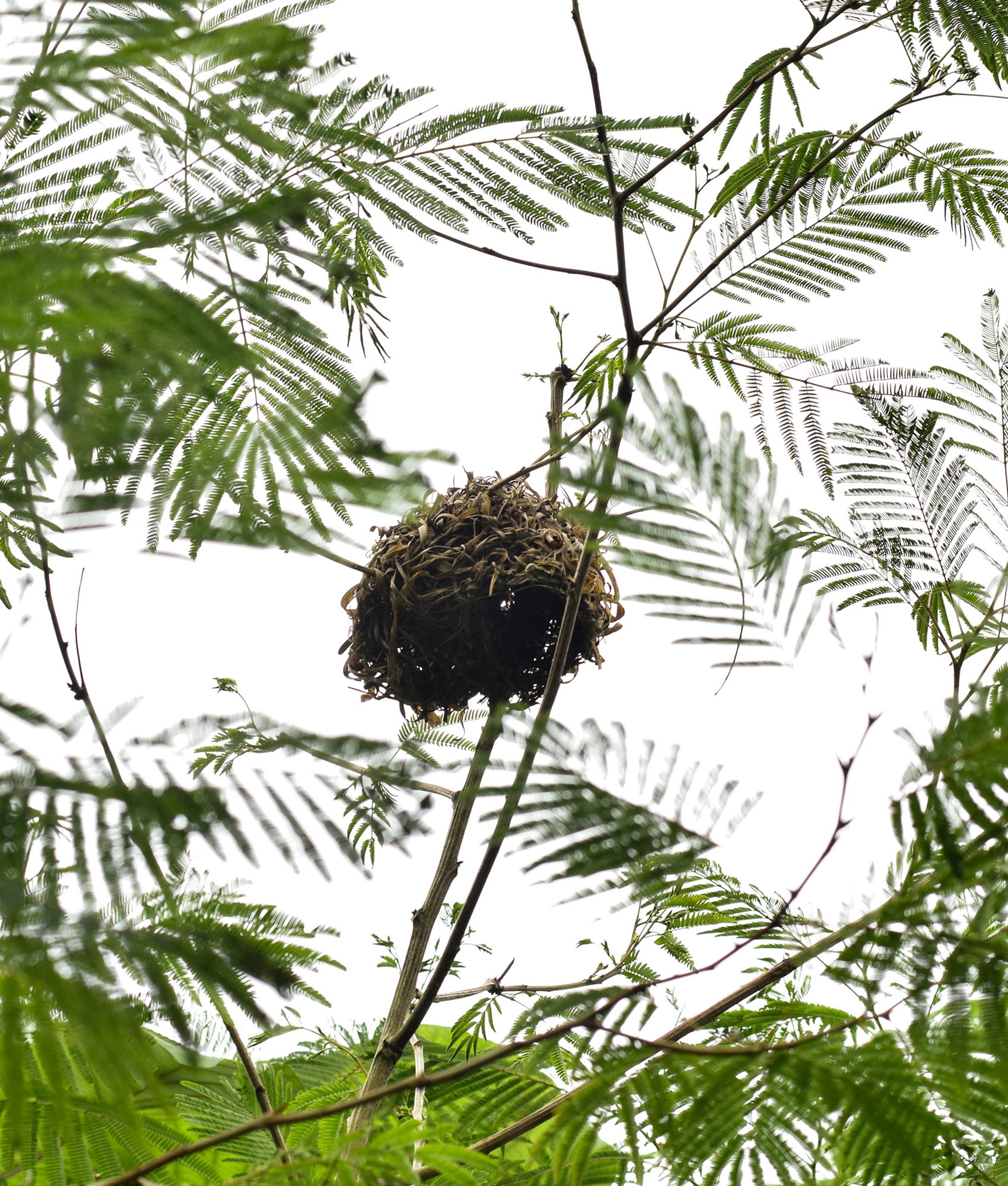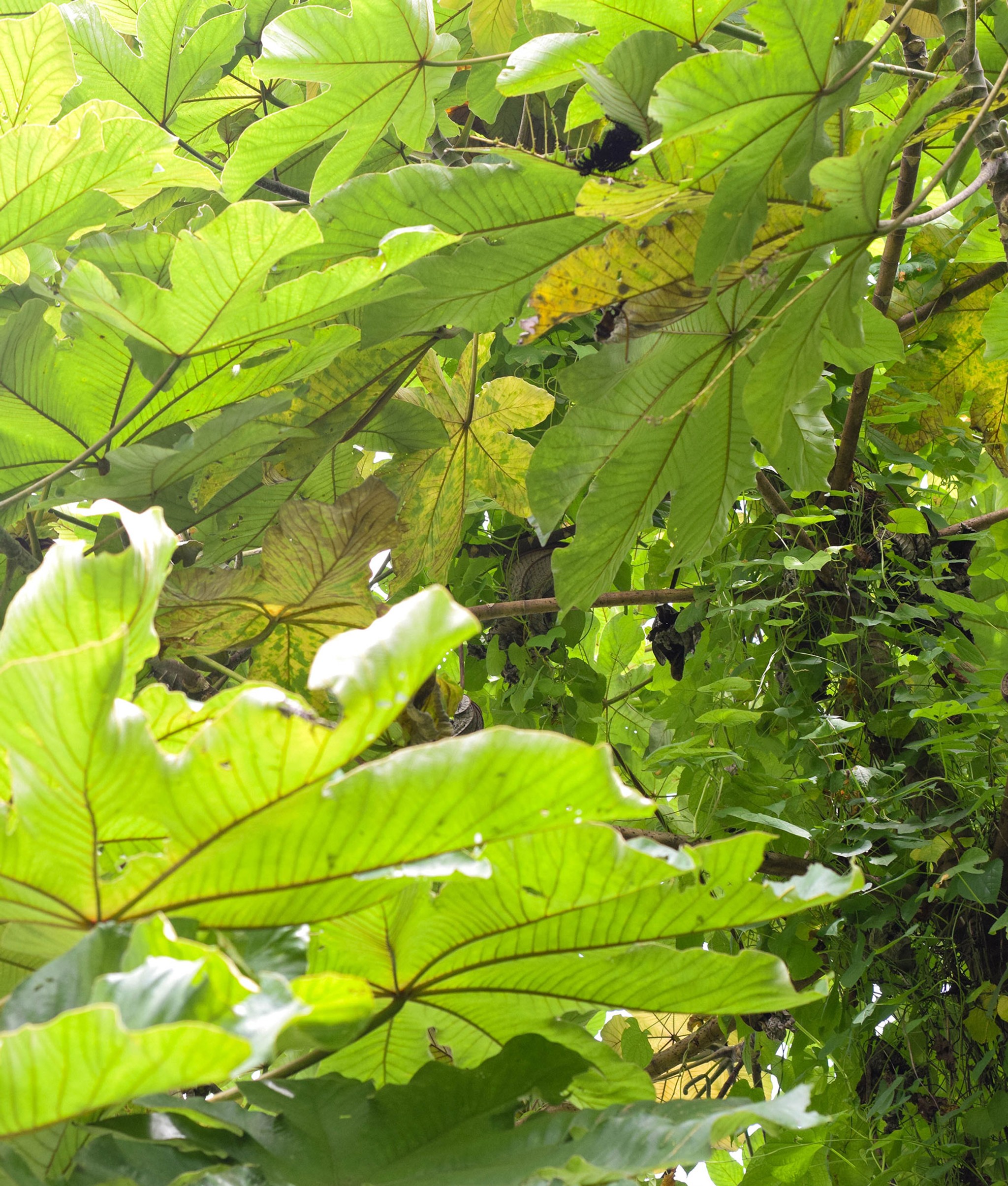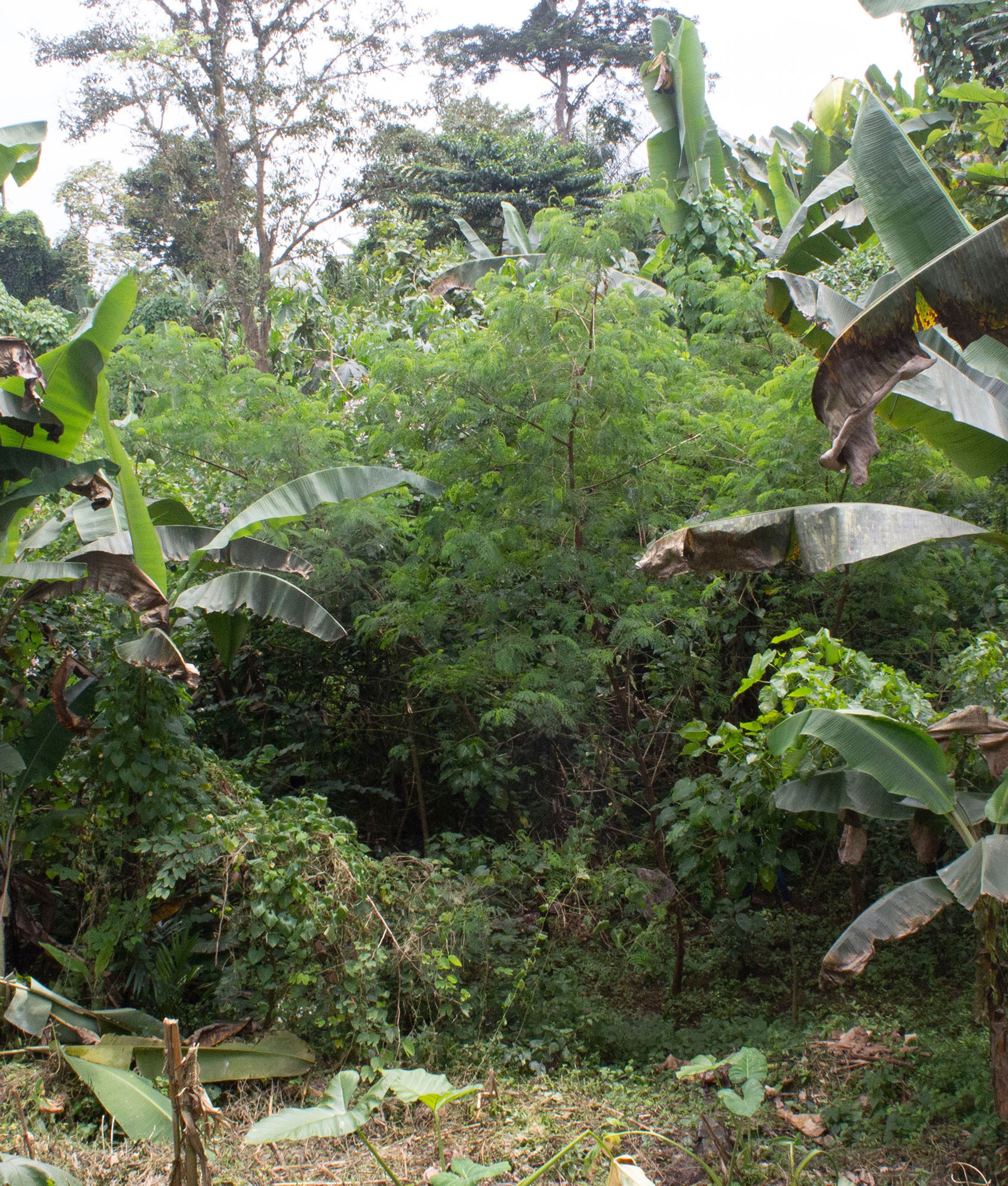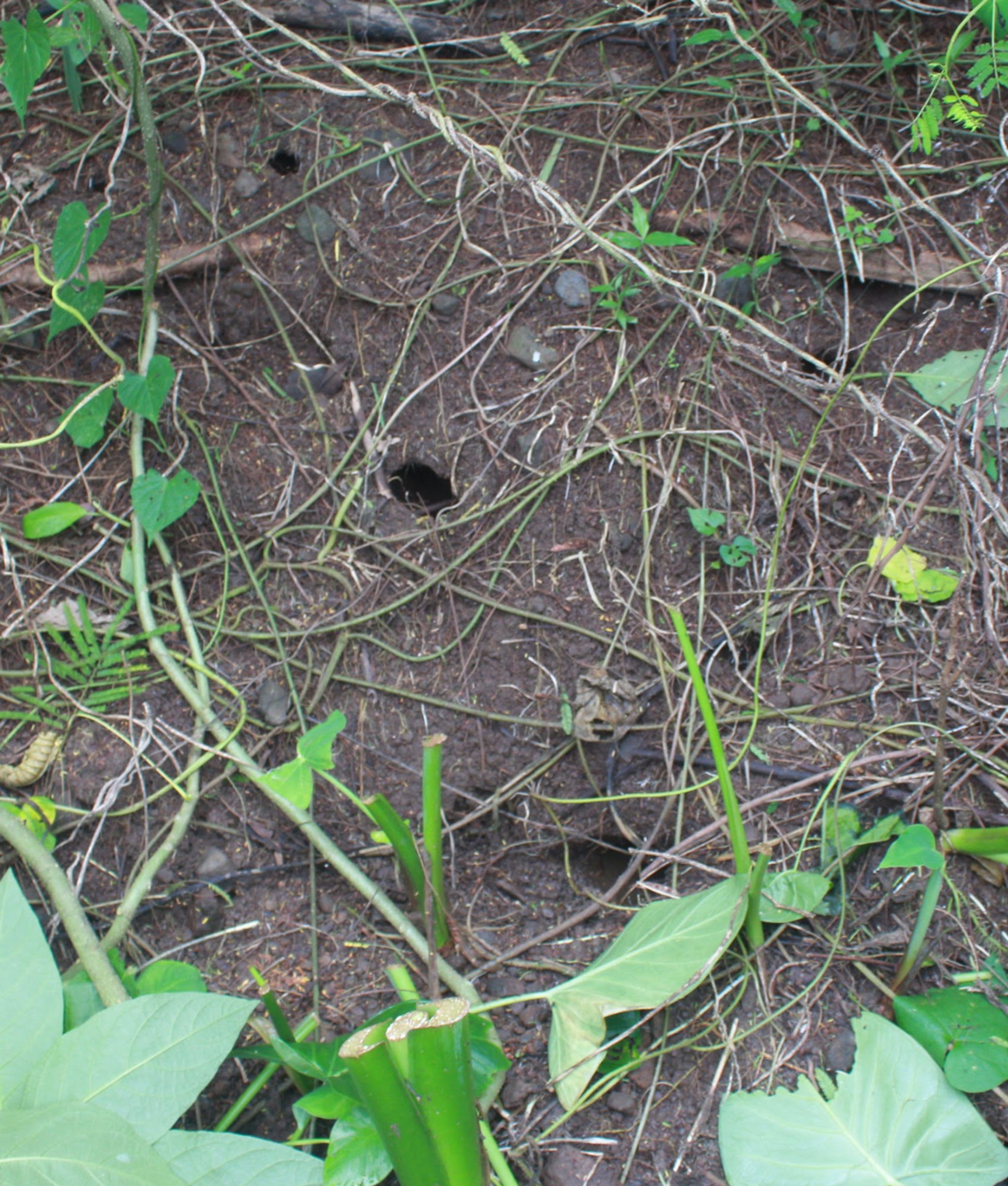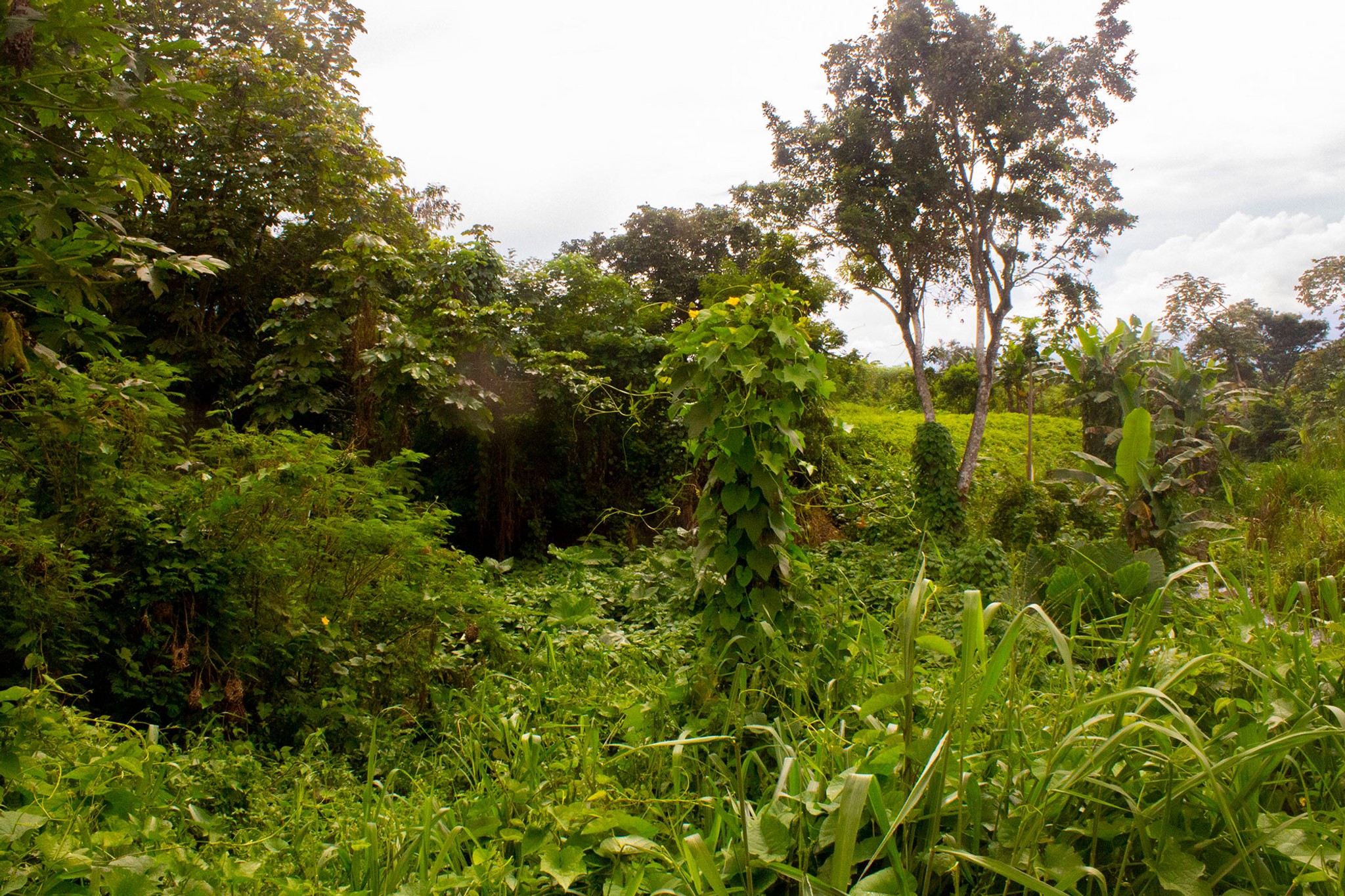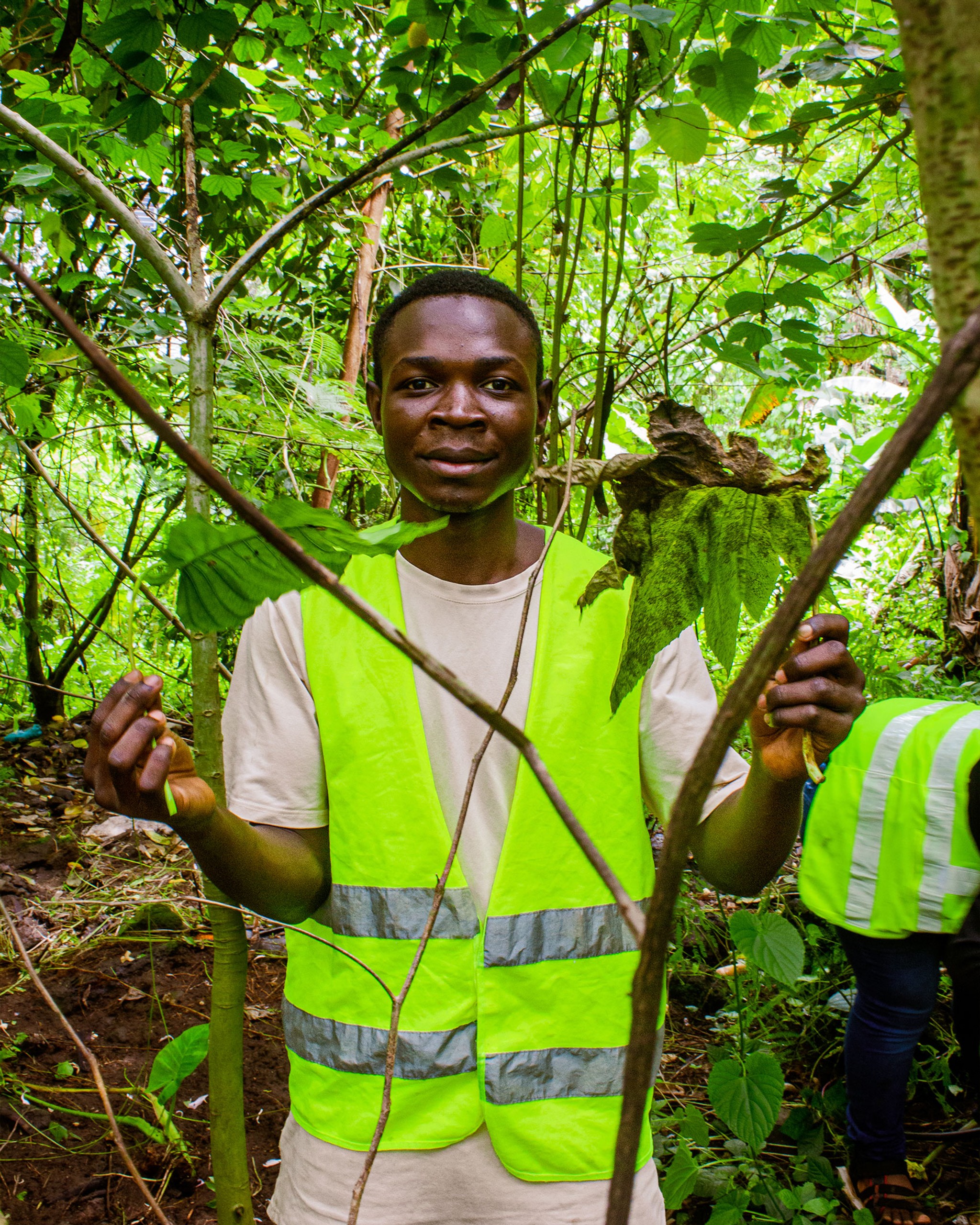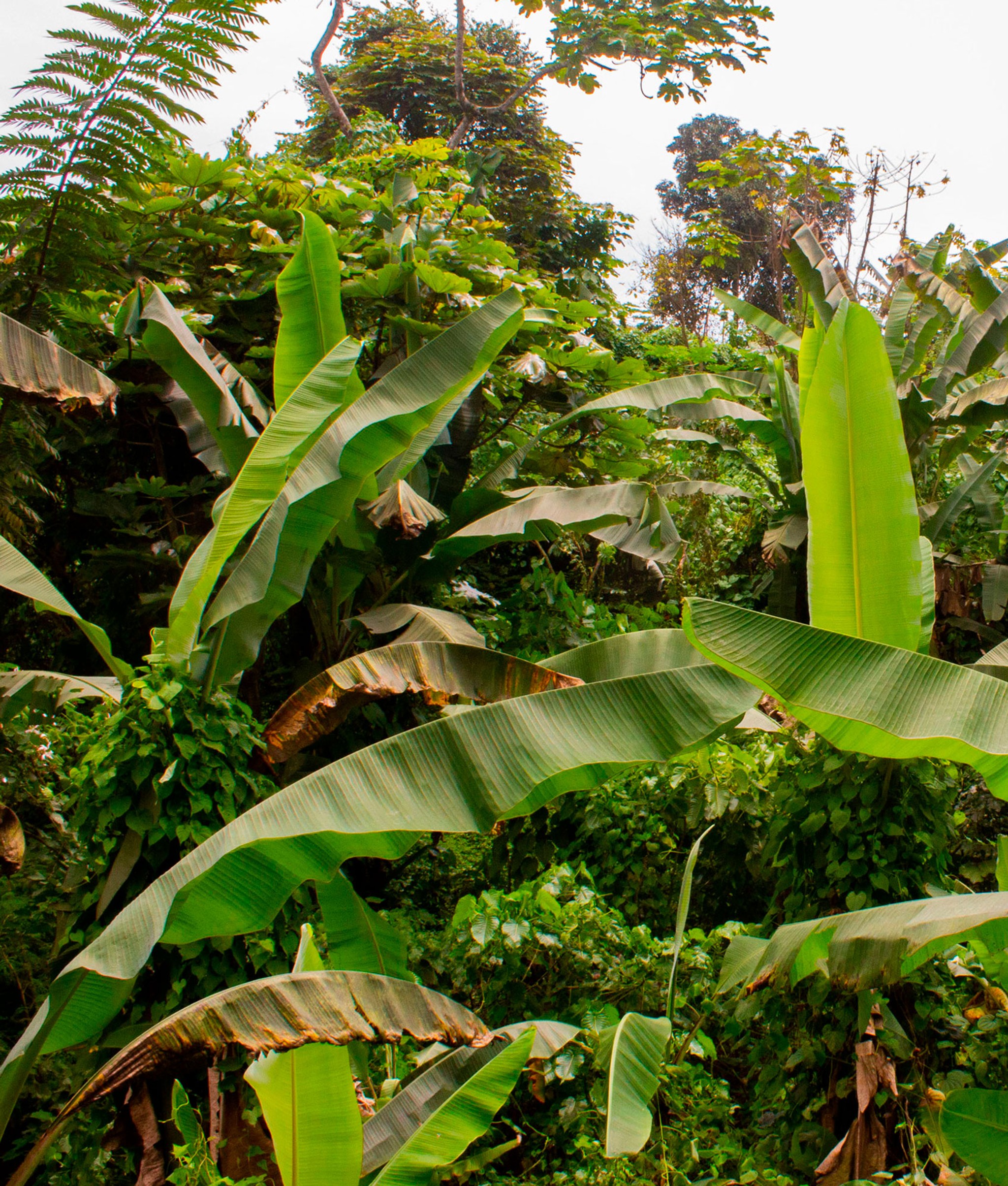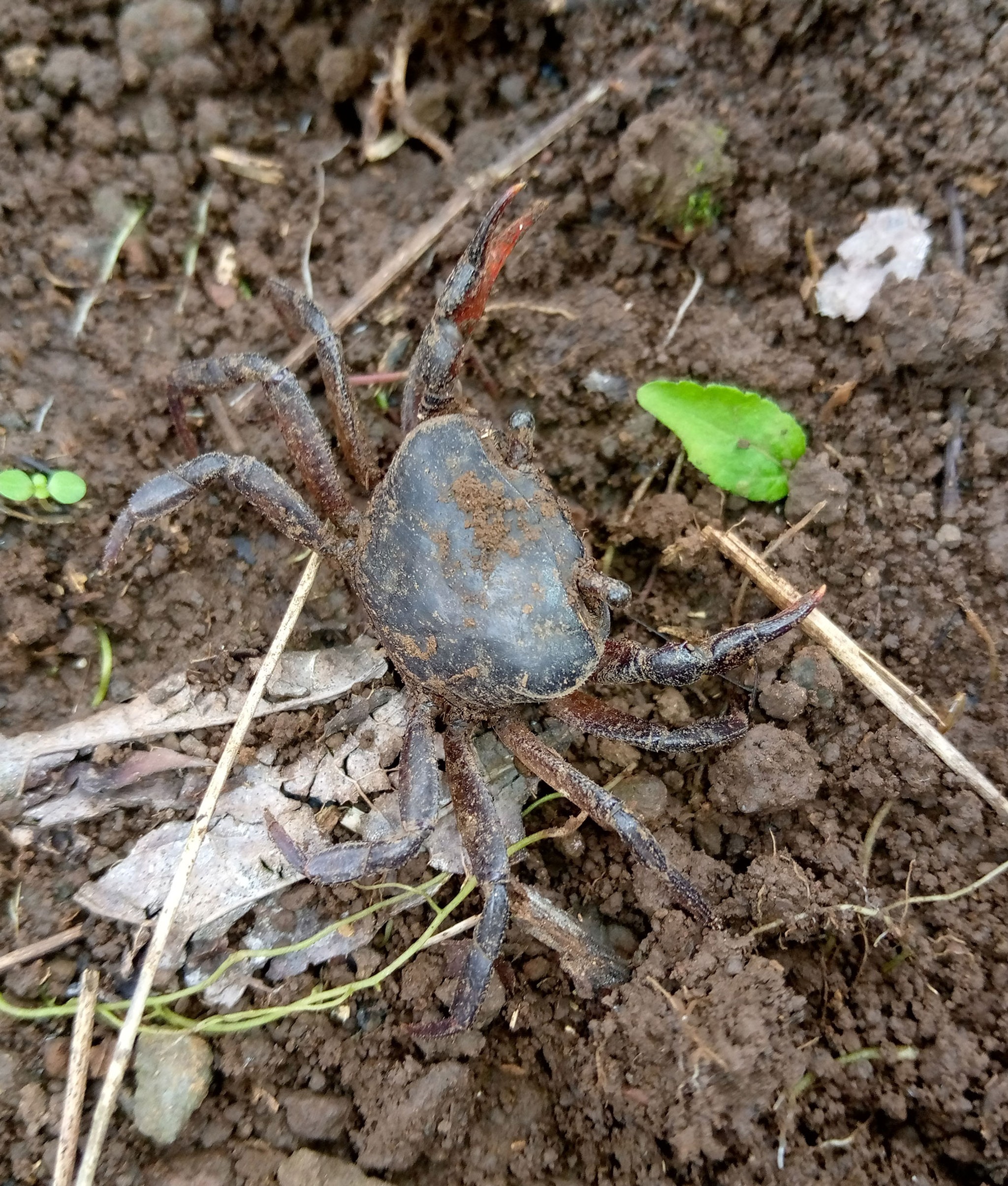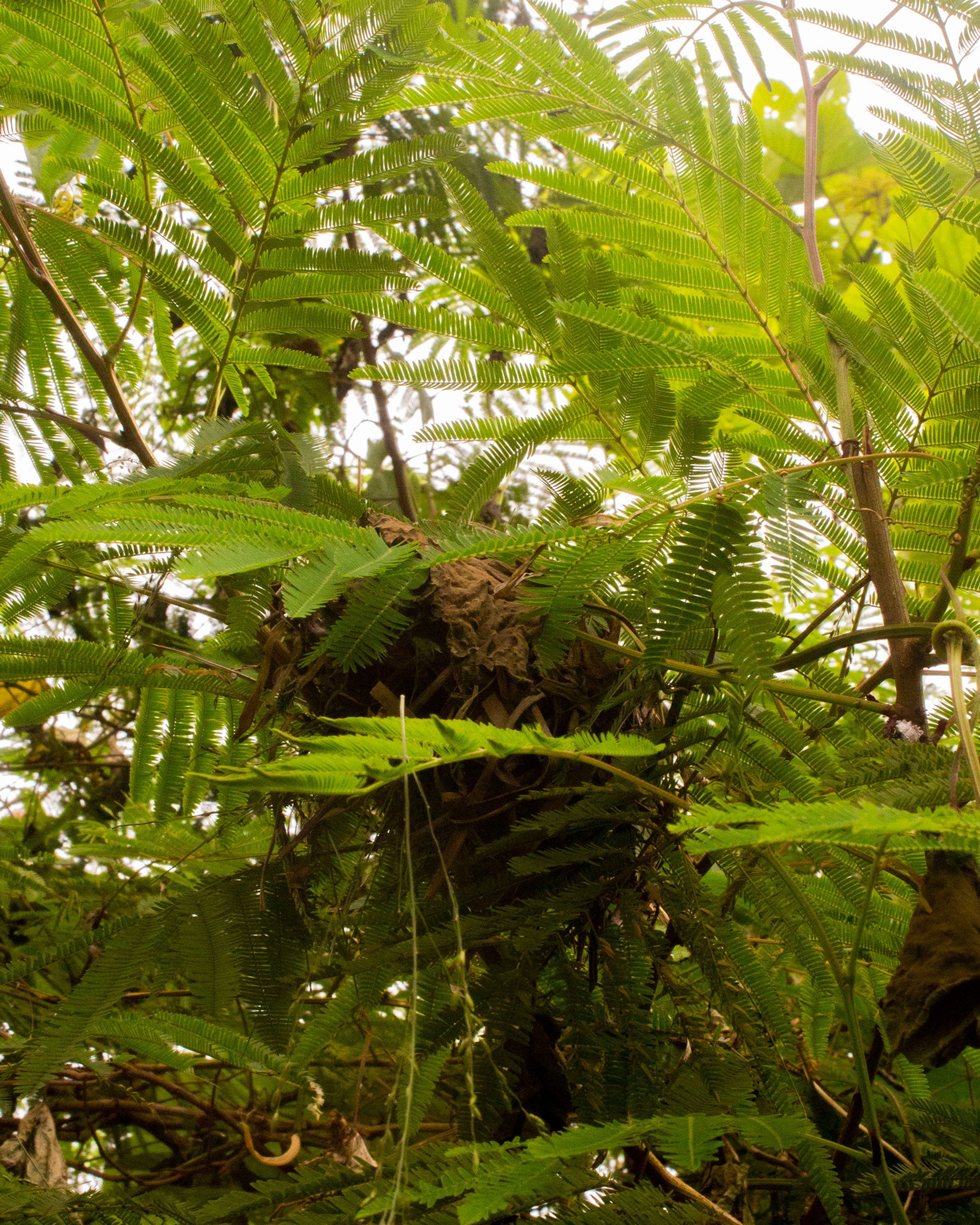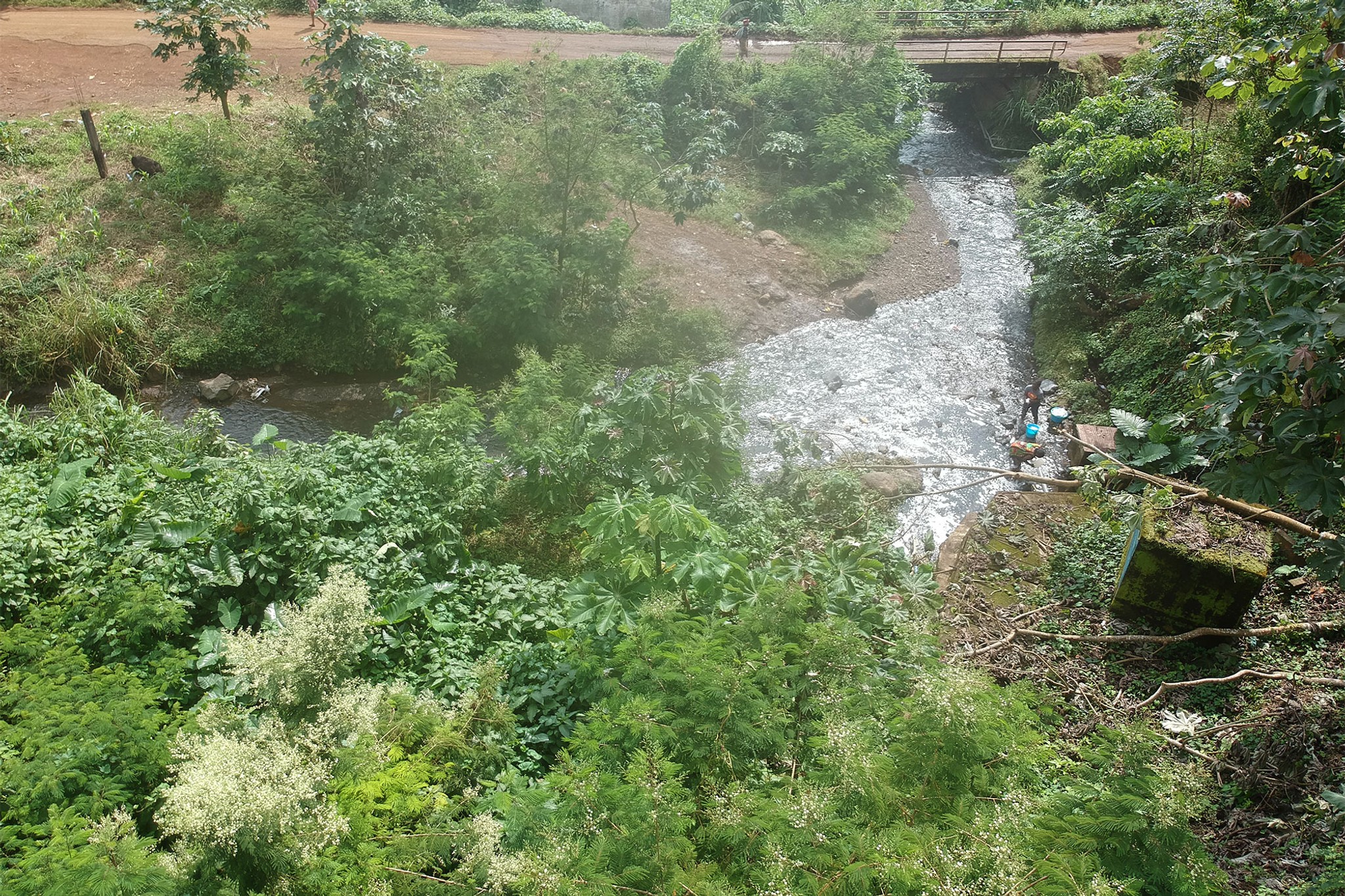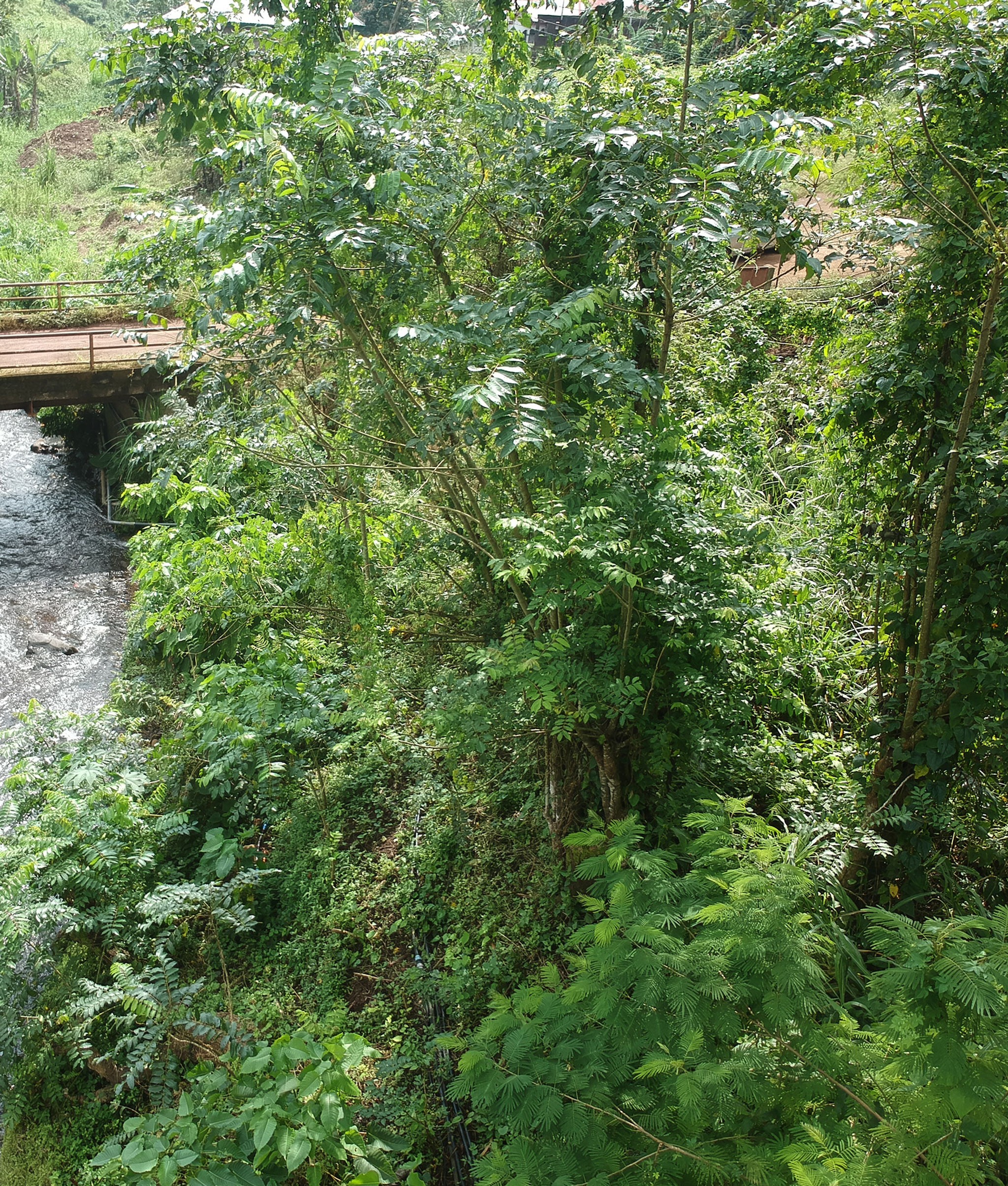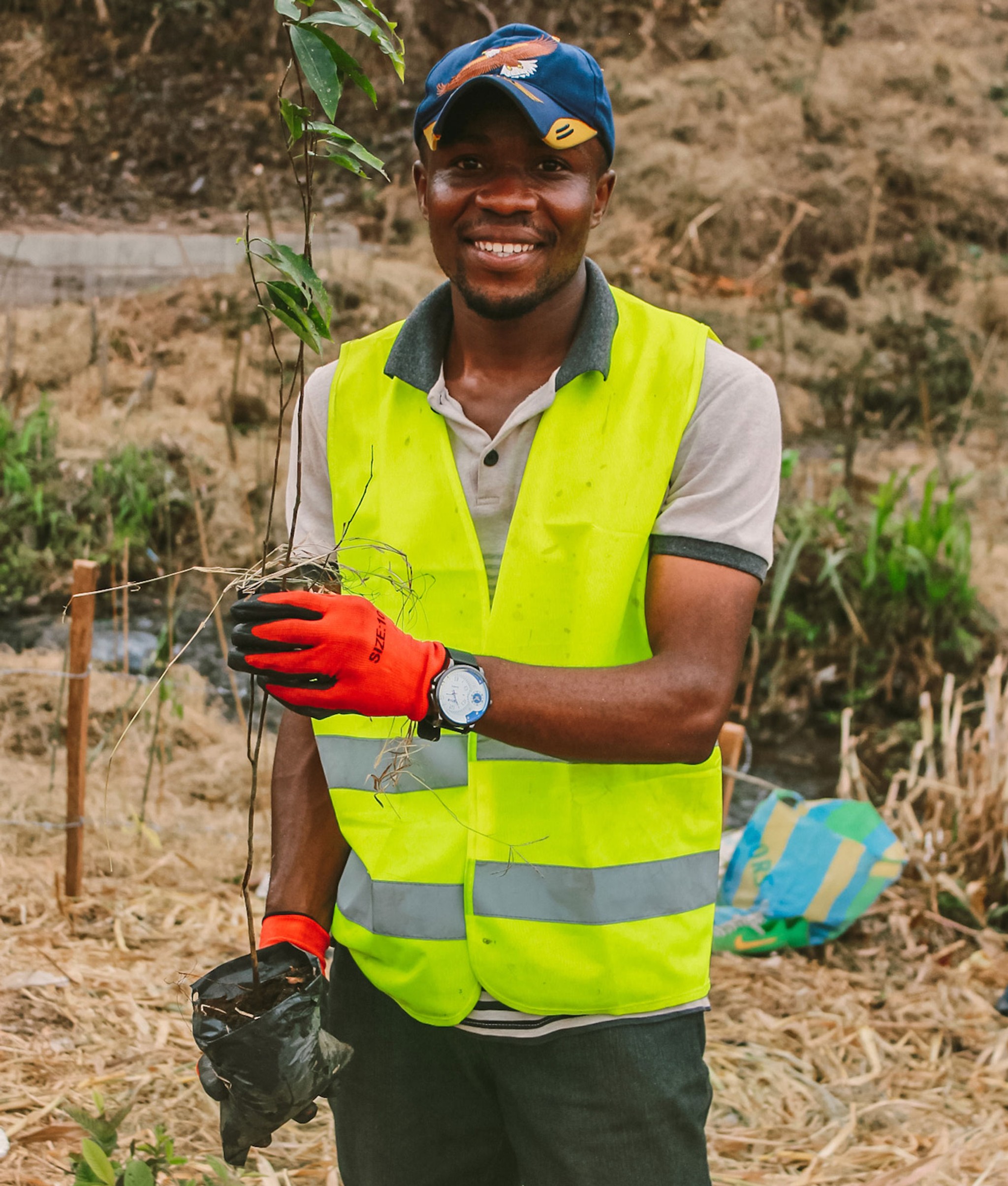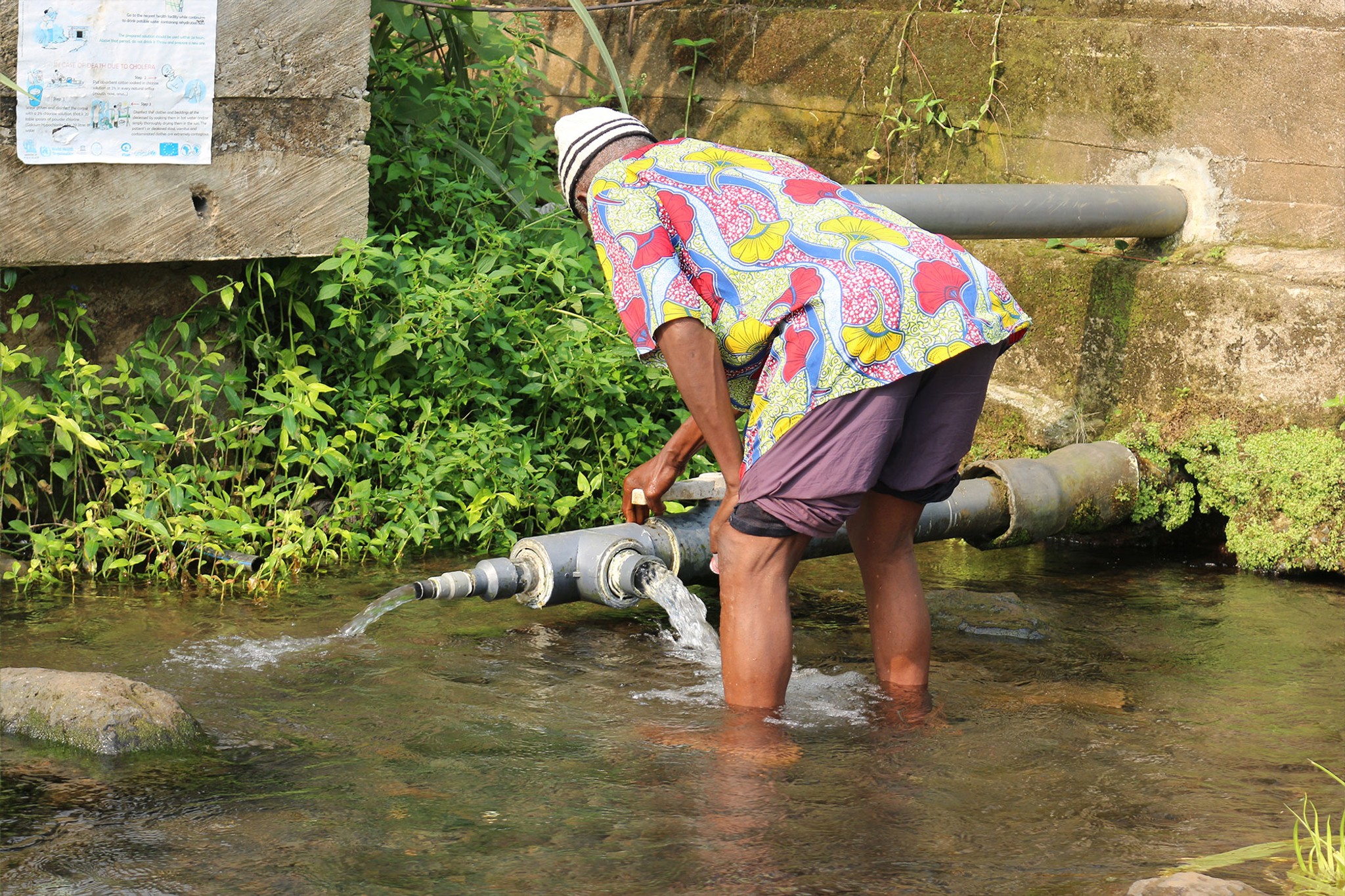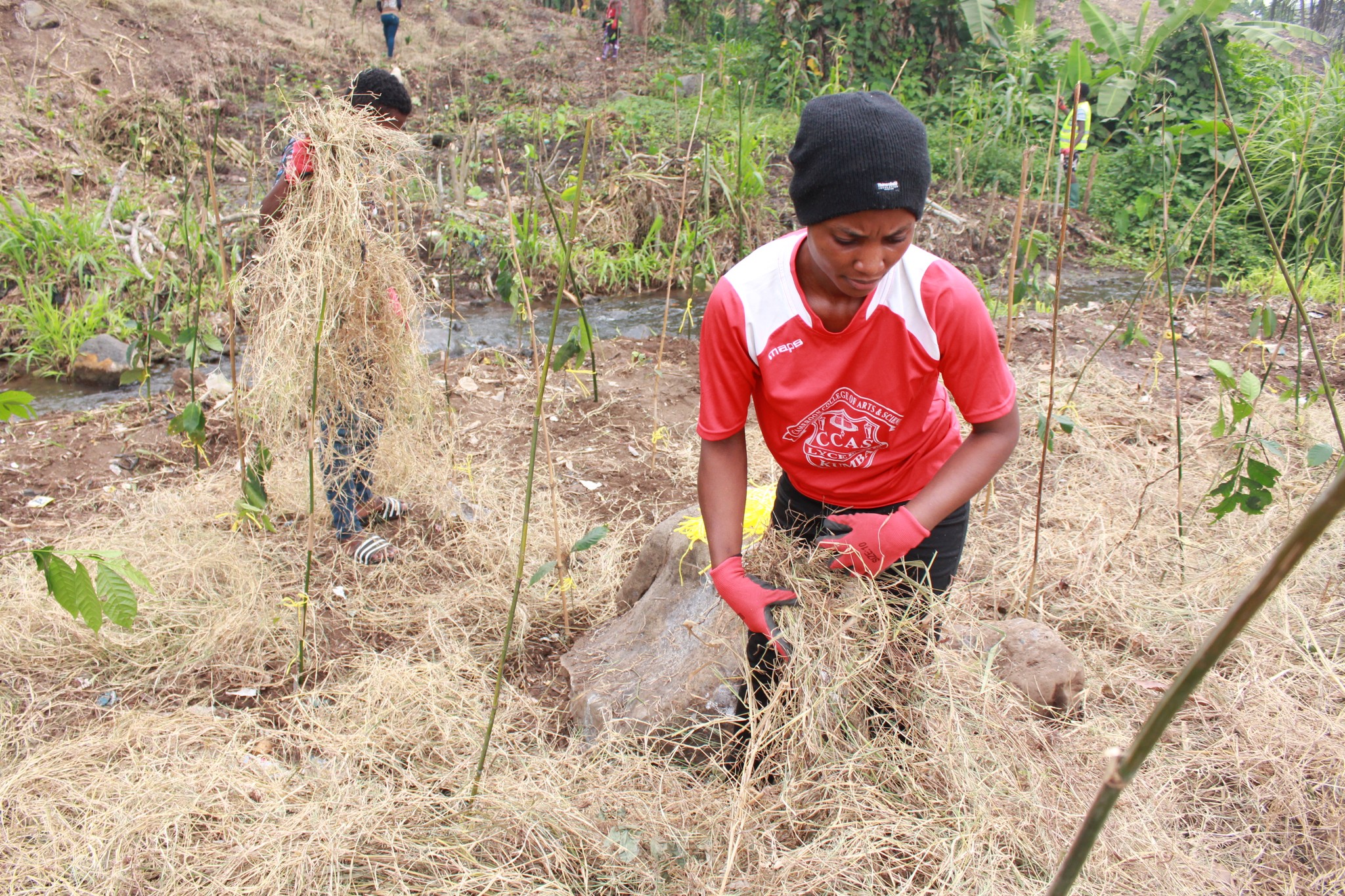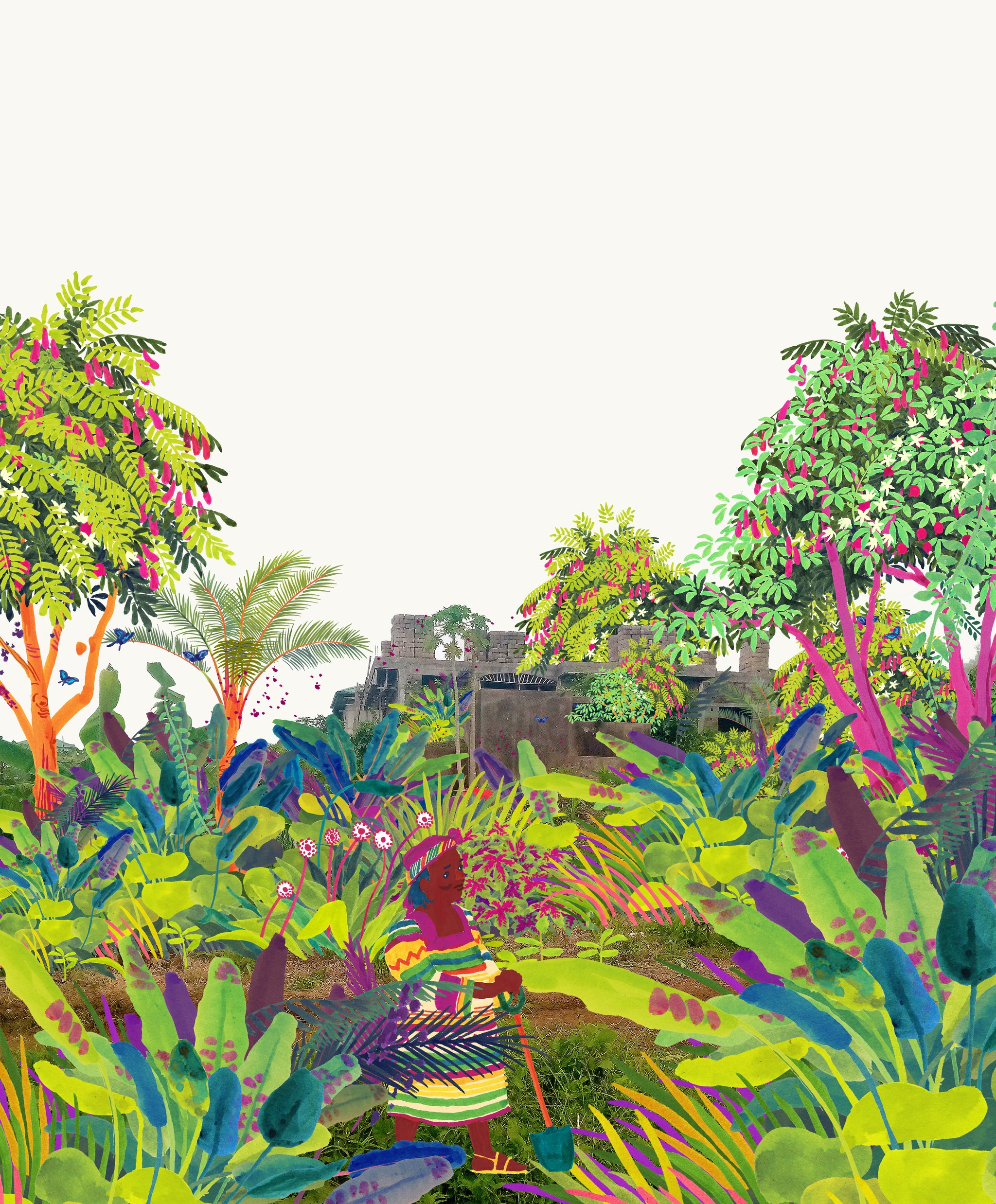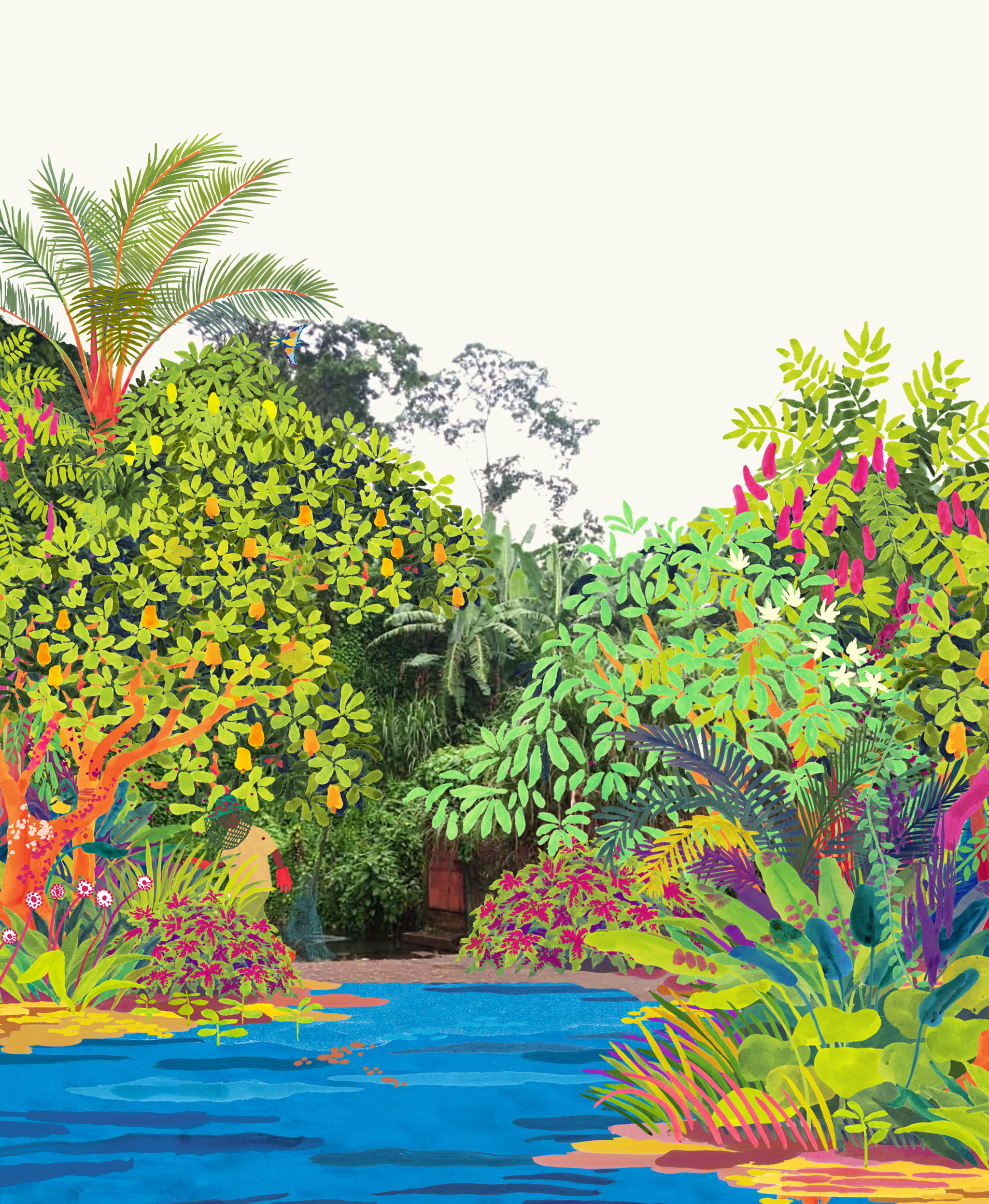Bulu
Rewilding Buea's water catchments - 2 of 3.


0
Trees
0
Square Meters
0
Native Species
Self Sustaining Forest
We planted Bulu in March 2020, and the forest has flourished, playing a vital role in conserving the watershed, raising water levels, and providing a thriving habitat for a diverse range of species. The forest has become a hotspot for local wildlife, supporting species such as the grass yellow butterfly (Eurema hecabe) and cabbage white butterfly (Pieris rapae). It has also transformed into a bird paradise, hosting species like the Bannerman’s weaver (Ploceus bannermani) and Cassin's honeybird (Prodotiscus insignis), which highlight the forest's significance as a sanctuary for local fauna.
The forest is home to key tree species such as Mahogany (Swietenia macrophylla) and Prunus (Prunus spp.), which provide stability to the land and support the area's biodiversity. Despite early challenges, including tree removal by villagers to make space for solar panels, Bulu Forest continues to thrive.
Forest Maker
Limbi Blessing Tata
Forest Partner



Ecosystem Restored
Final report: 19.12.2024
After approximately three years our SUGi Pocket Forests become self-sustaining. They no longer require human maintenance or watering, and can be handed over to Nature for biodiversity and complexity to naturally develop.
0%
Survival Rate
0
People living within 300 meters
0
kg of potential CO2 sequestration
Biodiversity
Biodiversity is all the different kinds of life you'll find in one area—the variety of animals, plants, fungi, and even microorganisms like bacteria that make up our natural world. Each of these species and organisms work together in ecosystems, like an intricate web, to maintain balance and support life.
0
Potential number of mammals
0
Potential number of birds
0
Potential number of amphibians
Forest Report: 2022
0 Years
Forest Age
0%
Survival Rate
0m
Average of Tallest 3 Trees
At over 2.5 years, this forest is thriving and fulfilling the purpose for which it was created: supporting the water catchment. It is estimated that close to 200 people are using the catchment each day.
Furthermore, the water in the storage tank has increased so much that the community has acquired solar panels to pump water to new and more difficult to reach nearby neighborhoods. This forest is really an amplified nature solution, benefitting those well beyond the town of Buea.
Local people - including the Chief - are proud of the forest and it has also become a social space, where individuals, including many local farmers, come to chat. It has become an important part of town life.
Biodiversity Notes:
There are many holes on the forest floor indicating the presence of burrowing animals. In addition, the forest continues to be a paradise for bird species, including the Cameroon sunbird (Cyanomitra oritis). There are an average of five bird nests per tree. African clawed frogs (Xenopus laevis) have been identified too.
Forest Report: 2021
0 Months
Forest Age
0%
Survival Rate
0m
Tallest Tree
Survival rate was affected by human destruction - locals cutting down some of the trees for timber. This issue has been resolved with the local community and most of the trees that were cut down have coppiced beautifully.
The height of the forest ranges from 60cm to 1000cm. A large proportion of the trees are between 800cm to 1000cm, with only three trees at a height of 60cm. The dominant trees in Bulu are two species of fast-growing nitrogen-fixing trees, including the Acacia (Acacia sp.). The fact that most of the trees cut down were nitrogen-fixing has helped in coppicing. The growth noted is exceptional, even for the climate and species, which is known to be fast-growing. Three species including the Acacia (Acacia sp.), Trumpet Flower Shrub (Costus spectabilis) and Castor trees (Ricinius communis) flowered and produced seeds in year one. The Acacia in particular produces very good food for birds and insects and makes a big contribution in attracting them to the forest.
The forest is also having an effect on increasing water levels surrounding the catchment, observed c. July 2021. Levels have risen to such an extent that two more streams have formed coming away from the catchment. It is thought that because of this new vegetation surrounding the catchment (land that was previously completely bare) water is evaporating less and gathering in such a way that it is forming new streams that run down to the river.
In year one, a significant amount of the cuttings planted at the swampy part of the forest died. The Cameroon team worked with SUGi’s Lead Forest Maker, James, to replace them with more water-loving tree species and this raised the number of species to nineteen.
“By rewilding the three water catchments in town, we aim to address and solve a decades-old water crisis.”
Limbi Blessing Tata
Planting: March 2020
The Benefits
Planting a forest at Bulu will:
- Recharge ground water and improve water tables.
- Regenerate biodiversity.
- Allow for honey gathering.
- Grow medicinal herbs and spices, nuts, fruits that can be harvested and sold by members of the community.
Wells in Buea
Today, 86% of the population of the Buea Municipality in South West Cameroon experience water shortage.
In 2019, Ecological Balance, a local NGO committed to rewilding 5 of Buea’s main water catchments. This was in a bid to solve the water crisis. With SUGi’s help, 600 trees of 9 different species were planted using the innovative Miyawaki method at the Bonduma water catchment.


